Eugene, OR Pollen and Allergy Report for Summer 2023
Pollen Allergy Trends in Eugene, OR
When is pollen lowest in Eugene, OR?

February
Lowest month total PPM
Avg. PPM
When is pollen highest in Eugene, OR?

April
Highest month total PPM
Avg. PPM
How does pollen in Eugene, OR compare to Oregon?
Eugene has a higher average PPM than the state of Oregon.
Eugene yearly avg PPM:
Oregon yearly avg PPM:
How does pollen in Eugene, OR compare to the USA?
Eugene has a higher average PPM than the USA.
Eugene yearly avg PPM:
USA yearly avg PPM:
Is pollen worse this year in Eugene, OR?
Spring 2023 was worse than spring 2022.
Spring 2023 PPM:
Spring 2022 PPM:
Average PPM in Eugene, OR
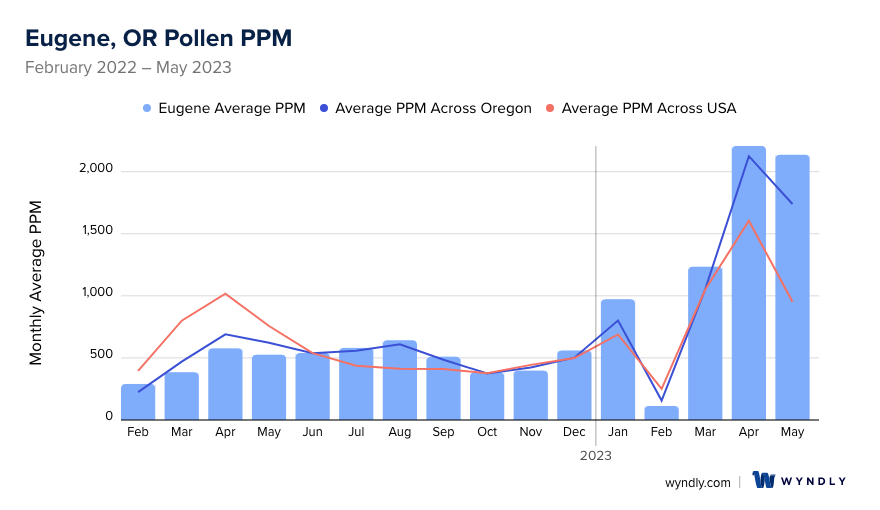
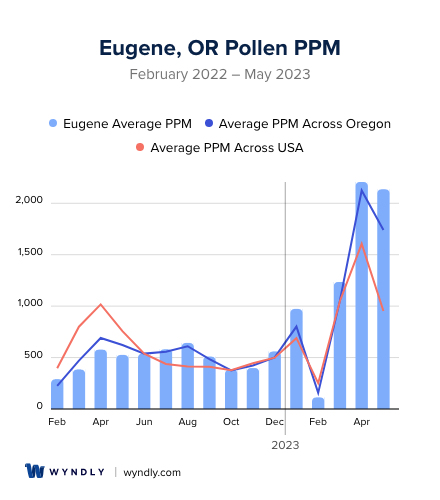
Eugene, OR Pollen and Allergy Breakdown by Month
Grass
When is grass pollen highest in Eugene, OR?
March has the highest grass pollen in Eugene, OR with an average PPM of
When is grass pollen lowest in Eugene, OR?
December has the lowest grass pollen in Eugene, OR with an average PPM of
Tree
When is tree pollen highest in Eugene, OR?
May has the highest tree pollen in Eugene, OR with an average PPM of
When is tree pollen lowest in Eugene, OR?
October has the lowest tree pollen in Eugene, OR with an average PPM of
Weed
When is weed pollen highest in Eugene, OR?
August has the highest weed pollen in Eugene, OR with an average PPM of
When is weed pollen lowest in Eugene, OR?
February has the lowest weed pollen in Eugene, OR with an average PPM of
Eugene, OR Pollen Monthly Breakdown by Pollen Type
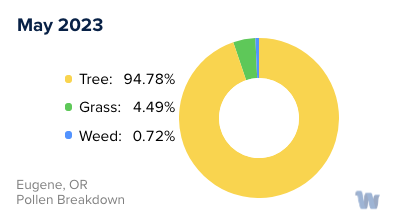
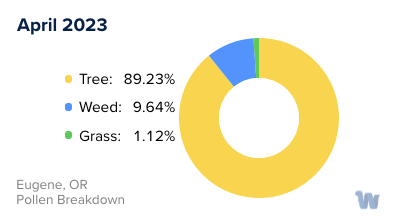
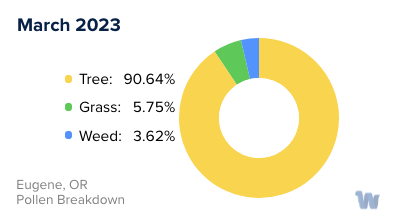
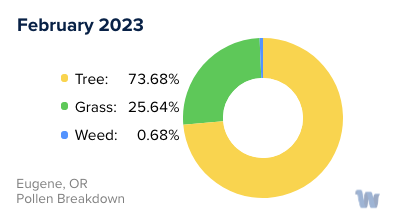
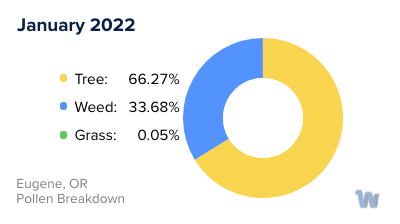
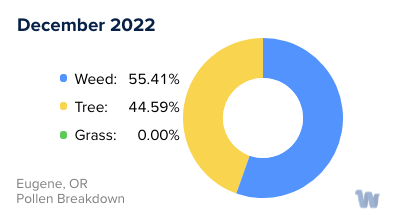
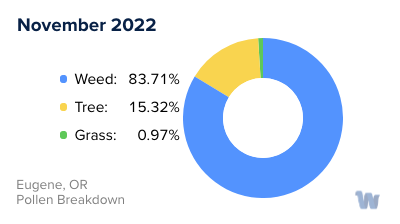
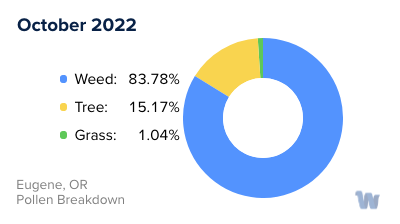
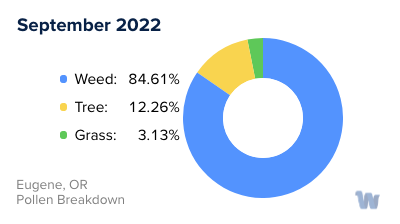
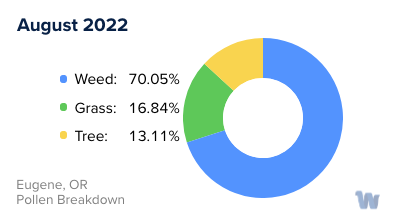
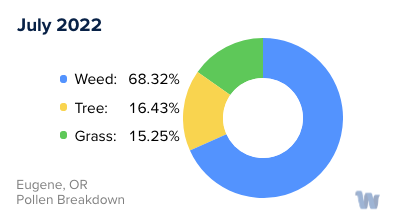
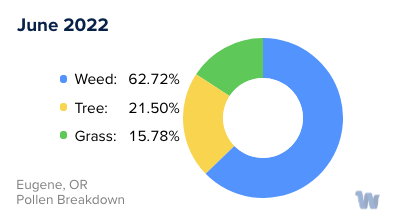
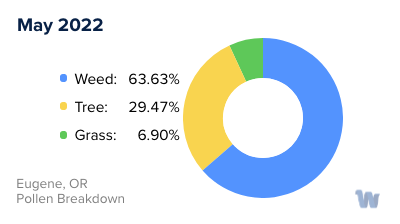
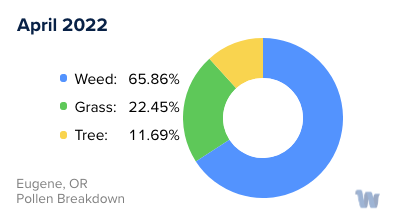
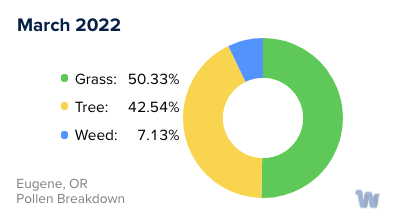
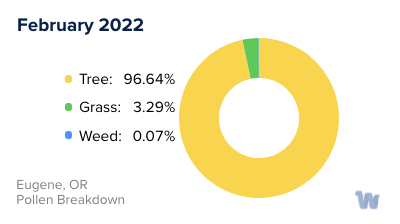
Pollen and Hay Fever in Eugene, OR
Pollen allergies, often referred to as hay fever, are a common occurrence for residents of Eugene, Oregon. The city's diverse flora paints a beautiful scenery, but it also contributes to various types of pollen that may trigger allergic reactions. Understanding the types of pollen and their seasonal patterns can help those affected anticipate and prepare for potential allergic episodes.
One major pollen source in Eugene is grass. The Willamette Valley, where Eugene is located, is rich in grass seed farms. The types of grasses that produce allergenic pollen include ryegrass, Kentucky bluegrass, and Timothy grass. Grass pollen season typically starts in late spring, around May, and continues into the early summer months, peaking in June.
Tree pollen is another significant allergen. Species such as oak, birch, cedar, and pine are common throughout Eugene and can cause allergy symptoms. The tree pollen season often begins in late winter, around February, and extends into the spring, usually peaking in April. It's worth noting that the timing and intensity of pollen seasons can vary each year depending on weather conditions.
Lastly, while less prevalent than grass and tree pollen, weed pollen can also cause allergic reactions. Weeds like ragweed, nettle, and plantain bloom from late summer into the fall, around August to October, releasing their pollen into the air.
It's important to note that every individual's sensitivity to different types of pollen can vary. Some may react more strongly to grass pollen, while others may find tree or weed pollen more problematic. Keeping track of local pollen forecasts, which provide updates on the types and levels of pollen in the air, can be a helpful resource for those with pollen allergies.
Living in Eugene, with its verdant landscapes and diverse plant life, can be a joy. However, for those susceptible to pollen allergies, understanding the types and timings of local pollen can be crucial in managing their wellbeing. While pollen-related allergies might be a challenging aspect of life in Eugene, being informed about the pollen seasons can make a significant difference.

